We’ve covered hundreds of miles across demanding terrain where staying hydrated isn’t a suggestion—it’s critical. Whether navigating exposed desert trails under relentless sun or grinding through alpine ascents in the Himalayas, we’ve depended on both hydration bladders and water bottles to maintain performance and stay safe in the backcountry.
Related: Best Water Bottles for Hiking
And when every ounce in your pack has to justify itself, hydration systems are no exception. I don’t guess which one works best—I’ve tested both, over and over again, in conditions where the margin for error is razor thin.
I’ve been out on routes where the next water source was 20 miles away and heat stroke wasn’t just a risk—it was a real possibility. That’s where preferences turn into priorities. What follows isn’t theory—it’s what I’ve learned through sweat, distance, and gear that had to perform when it counted.
What is a Hydration Bladder?
A hydration bladder is a soft, flexible reservoir designed for hands-free drinking on the move. Most hold between 1.5 and 3 liters of water and slide into a hydration sleeve inside your backpack. The standout feature is the hose that routes over your shoulder, clipped to your strap for quick sips without stopping
What is a Hiking Water Bottle?
A water bottle is the classic choice for hikers who want simplicity, durability, and ease of use on the trail. Whether it’s a hard-sided plastic bottle or a collapsible water bottle, the concept is straightforward: fill it, stash it in a side pocket, and sip when needed.
Are Hydration Bladders Worth It? Pros and Cons
I leaned into hydration bladders for their hands-free ease and trail-time efficiency. I liked being able to sip on the move without breaking stride—especially on long climbs where staying in rhythm mattered. The low-profile design sat close to my back and stayed put, even with a full 3-liter load.
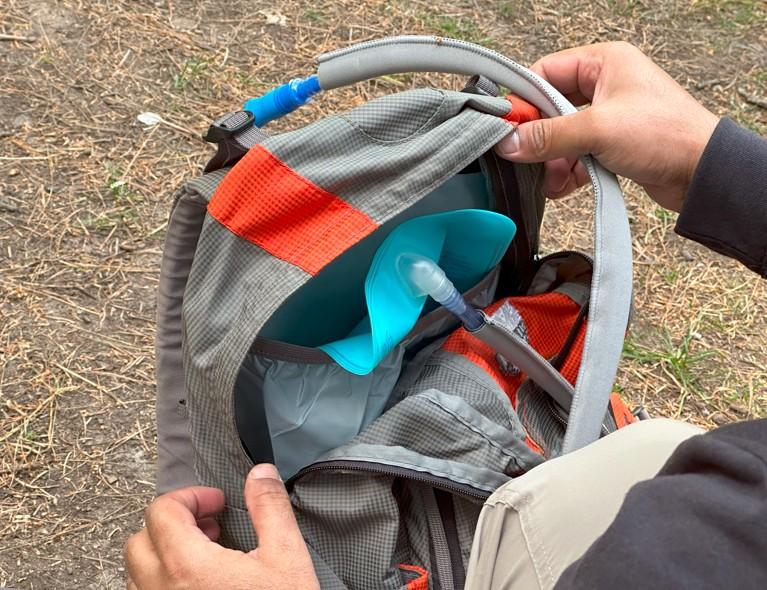
And the steady access to water helped me hydrate more consistently, so I didn’t have to stop just to grab a drink.
But they weren’t perfect. Cleaning was a headache for me—tubes got grimy fast, and drying the reservoir after a trip took time and patience. I also had to keep an eye on water levels. Without pulling the bladder out of my pack, it was hard to tell how much I had left.
I even once ran dry mid-hike and didn’t realize it until I was deep into the trail. That’s why I always prefer water bottles, and for storage, I keep a flexible bottle in my pack or a hydration bladder.
| Pros | Cons |
|---|---|
| Hands-free sipping | Hard to clean (especially hoses) |
| Encourages frequent hydration | Difficult to monitor water level |
| Stable, low-profile fit | Slow drying time |
| Efficient on the move | Hoses can freeze in cold temperatures |
Are Hiking Water Bottles Better? Benefits and Drawbacks
What I love about bottles is their simplicity. They’re easy to fill at a creek, quick to pair with squeeze filters, and effortless to clean—just unscrew and rinse. I’ve used bottles on everything from snowy day hikes to summer ridge walks.
But you do lose some efficiency. On trail, reaching back for a side pocket bottle isn’t as seamless as sipping from a hose. When you carry many bottles, that affects the pack balance. Still, when you want durability and visibility, bottles deliver. I always prioritize water bottles over bladders. I go with a large collapsible bottle like the Platypus Platy 2.0L Water Bottle to carry extra water.
Hard-sided models like Nalgene held up to drops and scrapes without leaking, and wide-mouth openings made it easy to refill at shallow streams. I loved cleaning them compared to bladders. Bottles were always easy and quick to clean—no tubes or awkward reservoirs to scrub, to be honest.
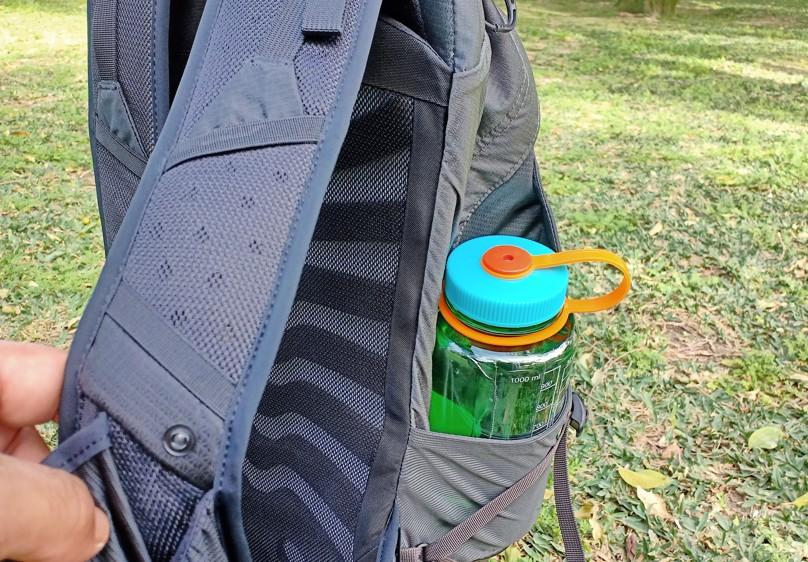
I agree that bottles bounced around inside pockets unless cinched down tight, and grabbing one with a loaded pack sometimes took a bit of effort. Many times, I had to remove my backpack to fetch the water bottle, and it was annoying.
| Pros | Cons |
|---|---|
| Easy to fill, clean, and use | Requires stopping to drink |
| Durable and reliable | Can unbalance pack if not packed well |
| Versatile (cooking, filtering) | May rattle or be bulky if unsecured |
| Less prone to freezing | Limited capacity—may need to carry multiples |
When to Use a Hydration Bladder vs. Water Bottle
| Criteria | Hydration Bladder | Water Bottle |
|---|---|---|
| Hands-free access | ✅ Excellent | ❌ No |
| Easy to clean | ❌ Difficult (tubes, bite valve) | ✅ Very easy |
| Cold weather suitability | ❌ Tubes can freeze | ✅ More reliable |
| Water capacity | ✅ High (up to 3L+) | ⚠️ Limited unless carrying multiples |
| Monitoring water levels | ❌ Hard to track | ✅ Visual check |
| Versatility (meal prep, mixing) | ❌ Limited | ✅ Excellent |
Hydration Bladder: Practical Analysis
Hydration bladders made the most sense on long, uninterrupted hikes where staying on the move mattered. I reached for mine on full-day ridge traverses and hot desert pushes—anytime I didn’t want to stop every hour just to drink. The ability to sip frequently kept me better hydrated, and the weight distribution felt stable even with a full 3-liter load riding in the pack.
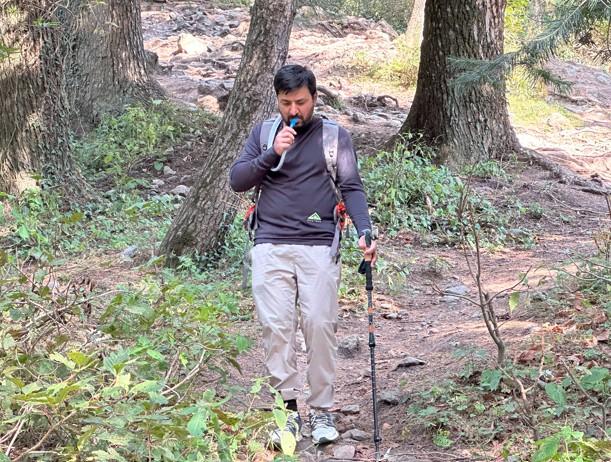
They also shined during technical hikes or scrambles where having both hands free was non-negotiable. Not needing to dig out a bottle meant I could keep my pace on exposed terrain or while navigating talus. I found that on multi-hour climbs, I drank more with a bladder simply because it was easier to access—no excuses to skip a sip.
But they weren’t always my go-to. On short hikes, cold-weather treks, or trips where gear weight needed to be dialed in to the ounce, bottles were simpler and more practical.
Water Bottle: Practical Analysis
Water bottles earned their place in my kit on cooler-weather hikes, short miles, and anytime I wanted simplicity over optimization. I grabbed them for casual afternoon loops or when trail conditions made refilling frequent and easy. Bottles were just faster to refill at streams or spigots—no fumbling with zippers, hose routing, or awkward pack angles.
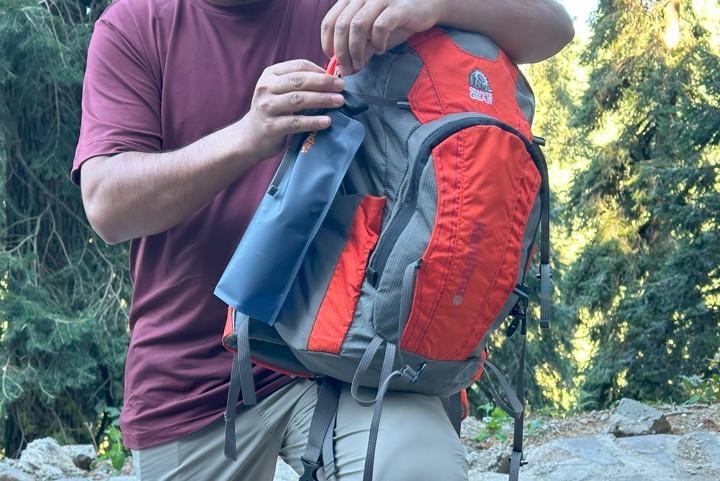
I also reached for bottles in sub-freezing conditions. Unlike hydration hoses that can freeze solid in minutes, a wide-mouth Nalgene tucked inside the pack or jacket stayed usable all day. And when I needed to monitor intake—like managing electrolytes or rationing water on dry stretches—bottles gave me a clear visual.
They doubled nicely for meal prep too. I used them to measure water for dehydrated meals, mix drink powders, or even as improvised weights to balance a bear hang.
How to Combine Hydration Bladders and Bottles for Maximum Flexibility
In my long-distance hiking, I almost always carry both—a 2L bladder for on-the-go sipping and for storage. Having both systems covers your bases on long hikes.
You can load up with 4–5 liters total without making your pack awkward. I also use a combination of a hard bottle and a soft bottle on many hikes.
I can pack a leak-proof soft bottle in the pack for water storage and keep a hard bottle in the side pocket—or vice versa.
Hydration System Costs: Bladders vs. Bottles
Hydration bladders are expensive, ranging from $30 to $80 compared to water bottles. They also require proper maintenance and occasional repairs in case of damage to bite valves or hoses.
Water bottles offer a simpler and more budget-friendly solution. Basic plastic bottles start around $10, while insulated models can exceed $40. They also need less upkeep and are often more durable over time.
For most users, the choice comes down to hiking style and budget. In practice, combining both systems can offer the best value if you like. As I mentioned, I do use both, and they work best for me.
Final Thoughts: Bladder, Bottle, or Both?
There’s no one-size-fits-all solution when it comes to trail hydration. Hydration bladders excel on long, continuous hikes where hands-free sipping helps maintain pace and rhythm. For rougher terrain, colder temps, or shorter outings, water bottles often prove to be the more practical and dependable option.
In real-world use, carrying both has often been the most adaptable approach. A bladder offers steady hydration on the move, while a bottle—ideal for electrolyte mixes or as a backup—has saved me more than once when a hose froze or gear failed.
Ultimately, it comes down to matching your hydration system to the trip at hand. Having reliable, field-tested gear that fits your needs makes all the difference when the miles add up and conditions turn tough.
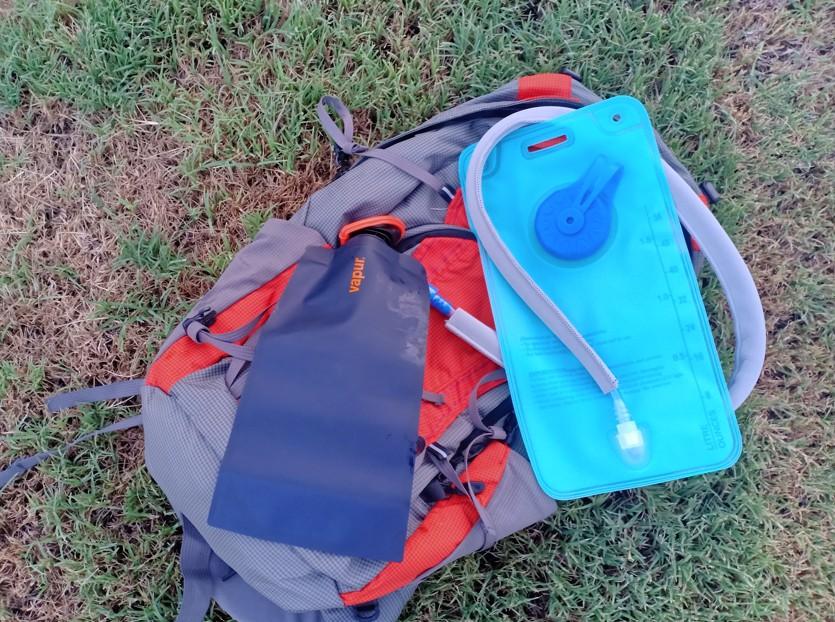
Impressive article! Informative and straight to the point.
This site is a lifesaver.